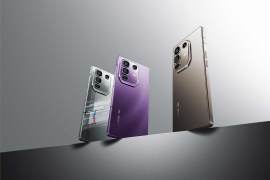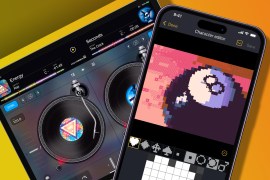Nintendo Switch review
After bringing in an incredible line-up of games, Nintendo's portable has become a gaming great
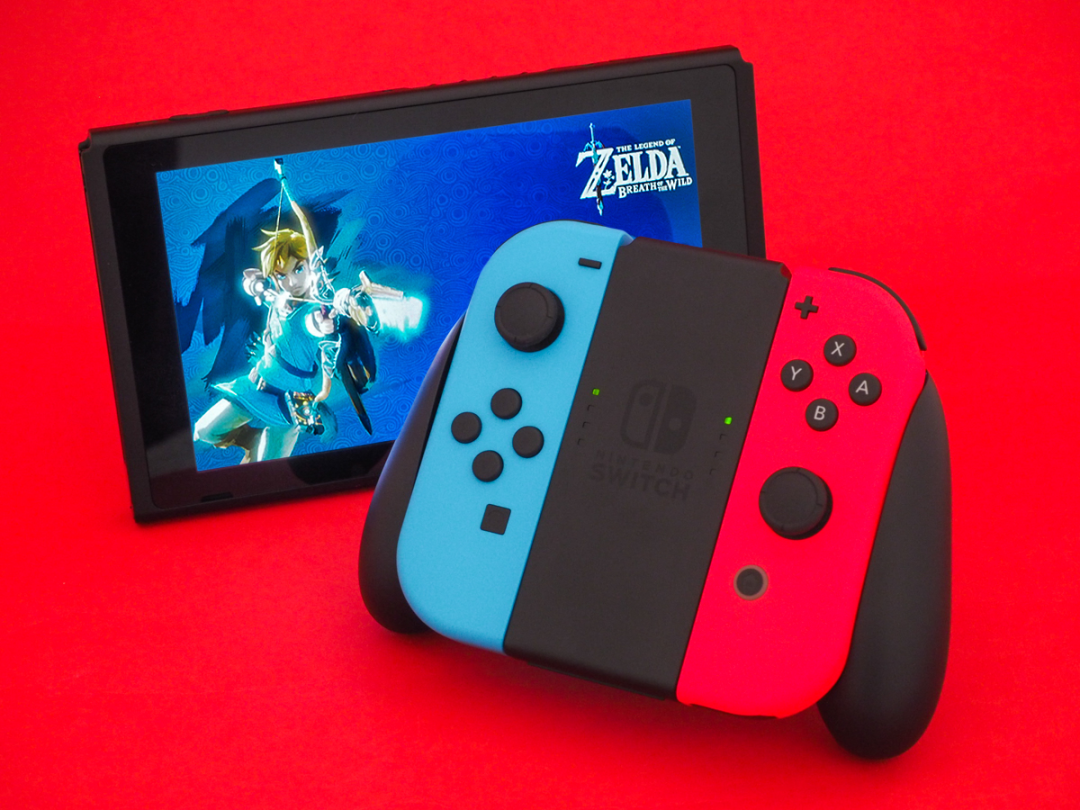
What’s the difference between a PlayStation 4 and Xbox One? One plays Uncharted, the other Halo. One your mates might own, the other they probably don’t. One is a big black box that sits under your TV, the other is also available in white.
Nintendo’s Switch is not like those consoles and that is what makes it so special.
The idea behind the Switch is simple: a gaming machine that plays as well at home as it does on the go. One console to rule them all, if you like. It’s what the Wii U was aiming for and fell so spectacularly short of. This time, Nintendo has got it spot on. The hardware is immensely fun to handle and the games so far are stellar, but… a few niggling doubts about the Switch remain.
Of course they do. This is a Nintendo console we’re talking about here.
Review originally published 2017
Games: Full support
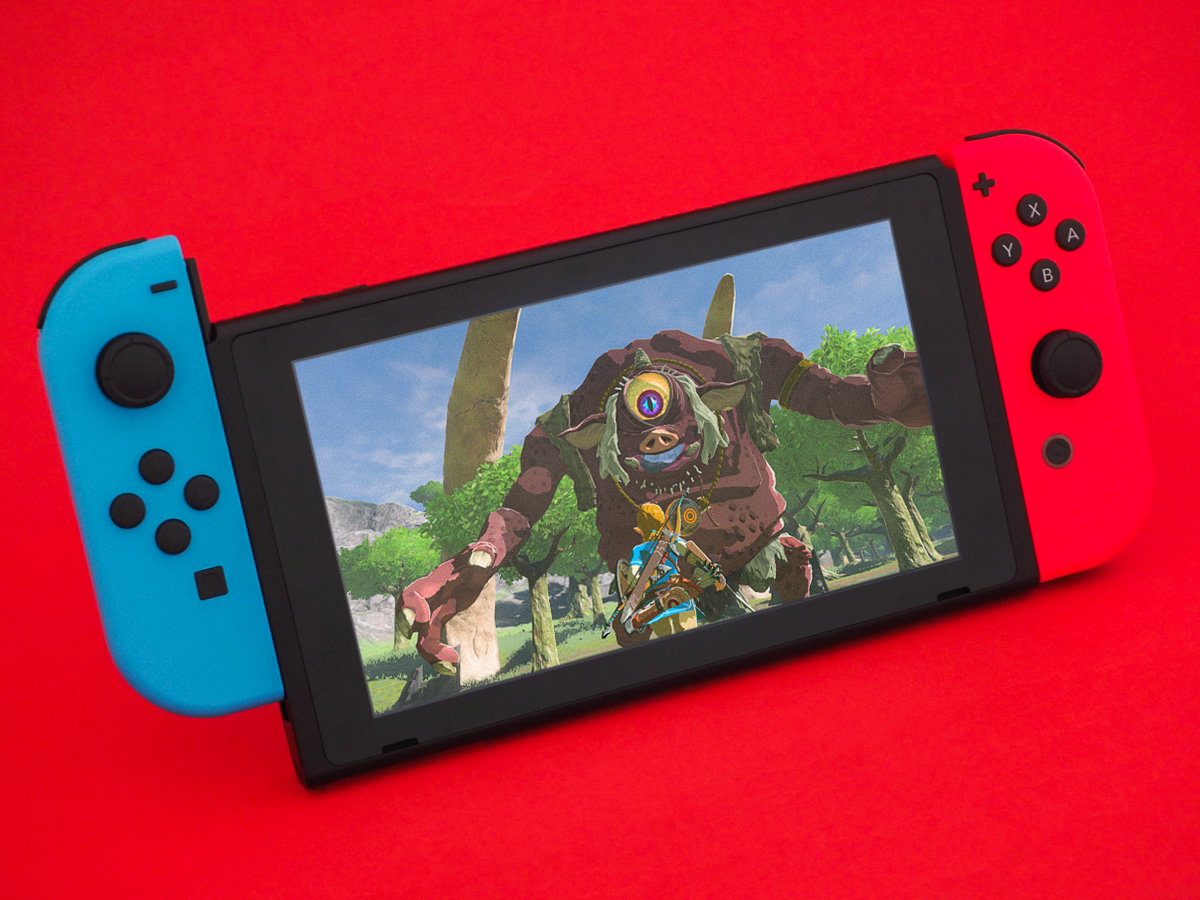
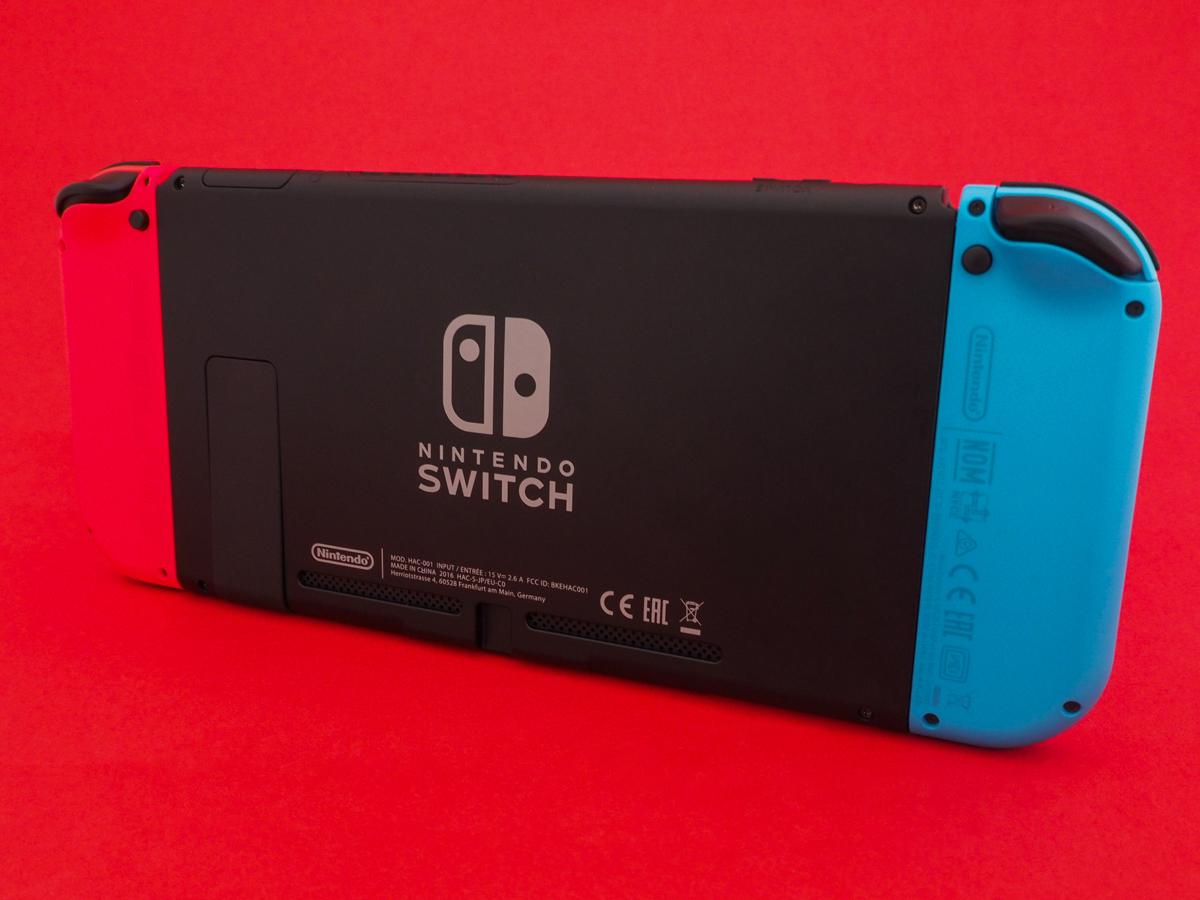
Back at launch, I had a few concerns that the Switch couldn’t attract the third-party support that the likes of the PlayStation 4 and Xbox One could. Sure, the Switch had big-hitters Super Mario Odyssey and The Legend of Zelda: Breath of the Wild release in its launch year, but as the Wii U showed, a console can’t rely solely on exclusives these days.
16 months later, my concerns have fizzled out. Several popular third-party games are now (or are soon to be) available to play on Ninty’s hybrid console, with some of the biggest highlights including Dark Souls: Remastered, Wolfenstein II and the mammoth multiplayer Fortnite.
But where the Switch has seen huge, and pleasantly surprising, success is with its support for independent games. Cult favourites such as Stardew Valley, Shovel Knight and Celeste have seen even healthier sale figures on the Switch than on rival consoles, leading indie developers to flock for a piece of the Nintendo pie.
Recently, the Switch saw the fantastic Hollow Knight ported over, while there’s a tonne more promising inides set to arrive such as Overcooked 2, Super Meat Boy Forever and Undertale.
But while there third-party support over the last year has been incredibly encouraging, it’s of course Nintendo’s star line-up of exclusives that has helped the Switch become one of the best consoles to buy right now.
The aforementioned Odyssey and Breath of the Wild are two of the greatest games to have been released in the last decade, while other gems such as Mario + Rabbids Kingdom Battle, Donkey Kong Country: Tropical Freeze and Mario Kart 8 Deluxe add convincing muscle to the Switch’s muscle.
Nintendo has by no means used all of its ace cards either. Super Smash Bros. Ultimate, Pokémon: Let’s Go and Super Mario Party are all expected to release later this year, while Bayonetta 3, Metroid Prime 4 and a mainline Pokemon adventure will follow in 2019. Even the most dedicated of gamers won’t run out of games to play here any time soon.
Design: Portable perfection
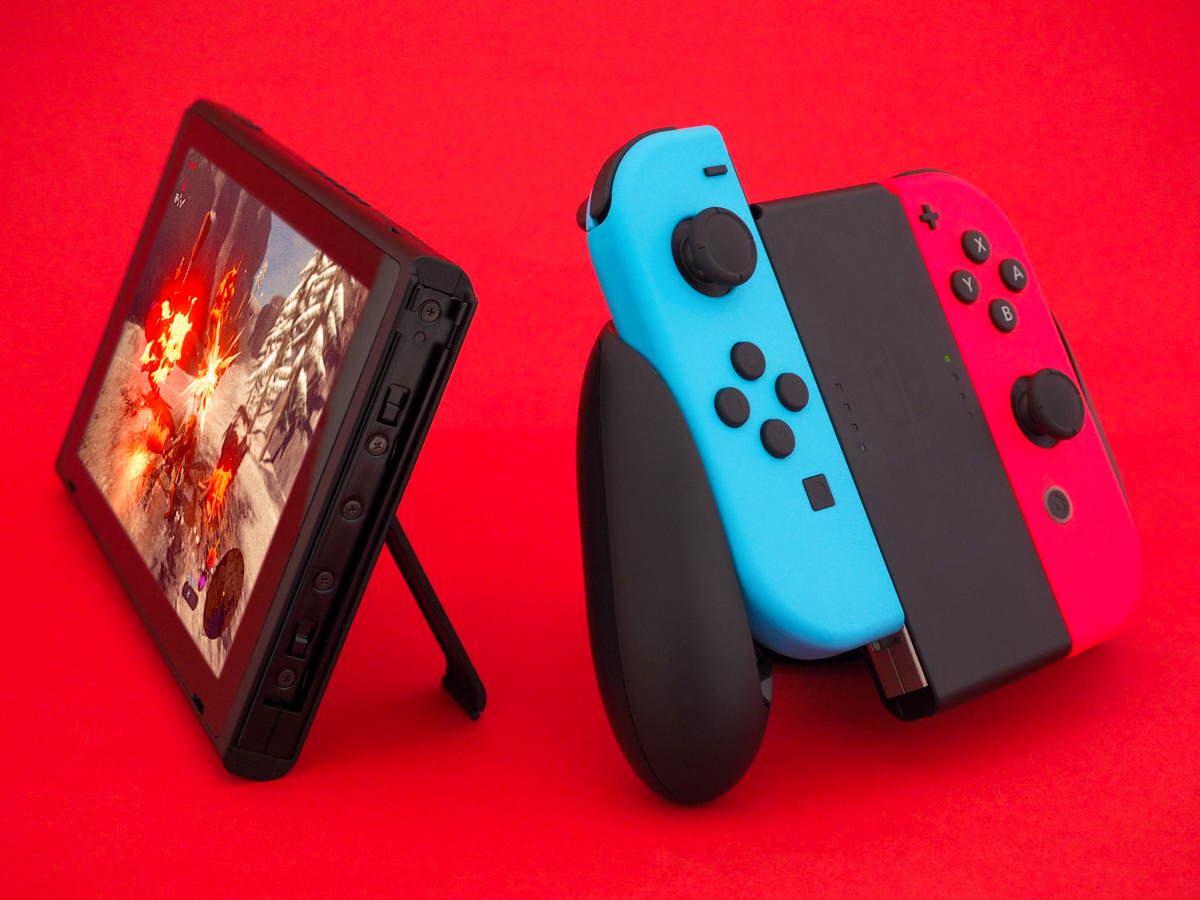
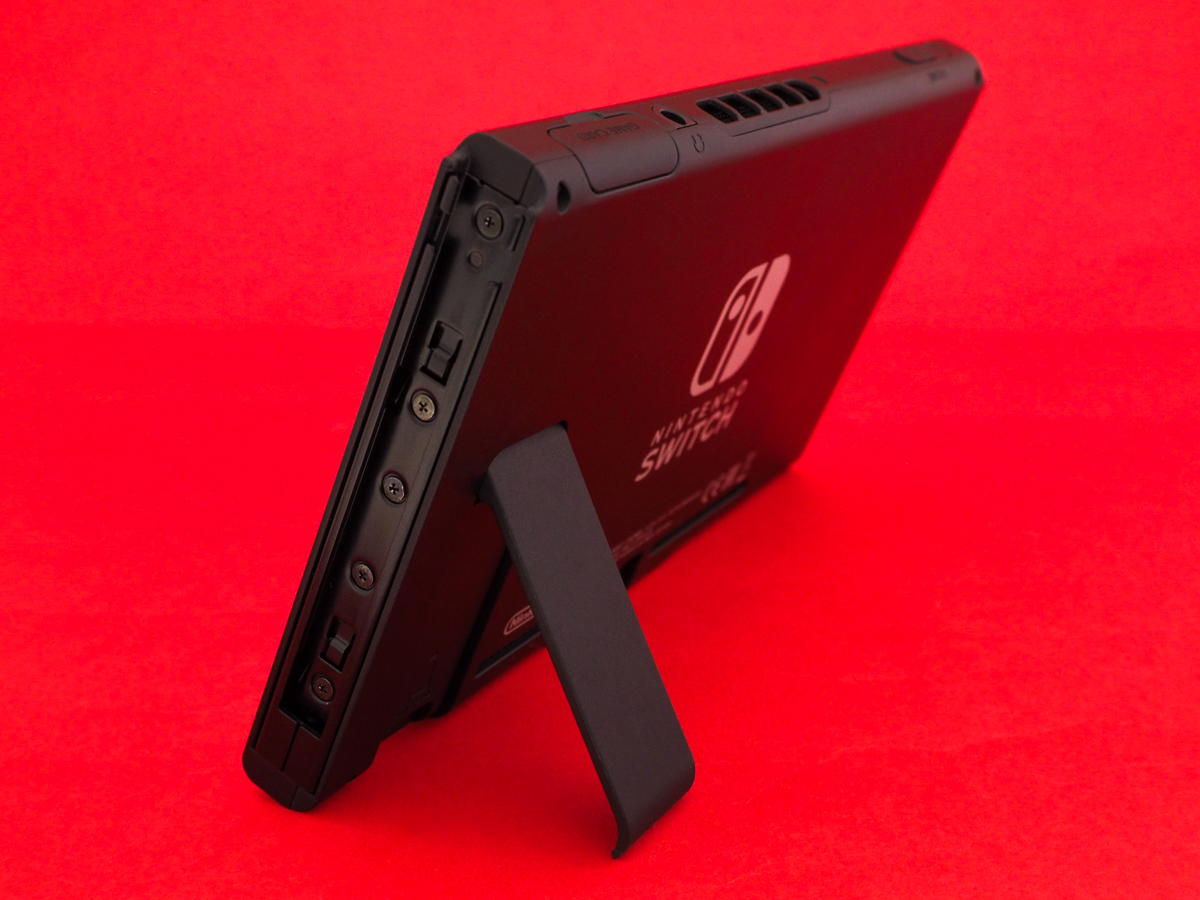
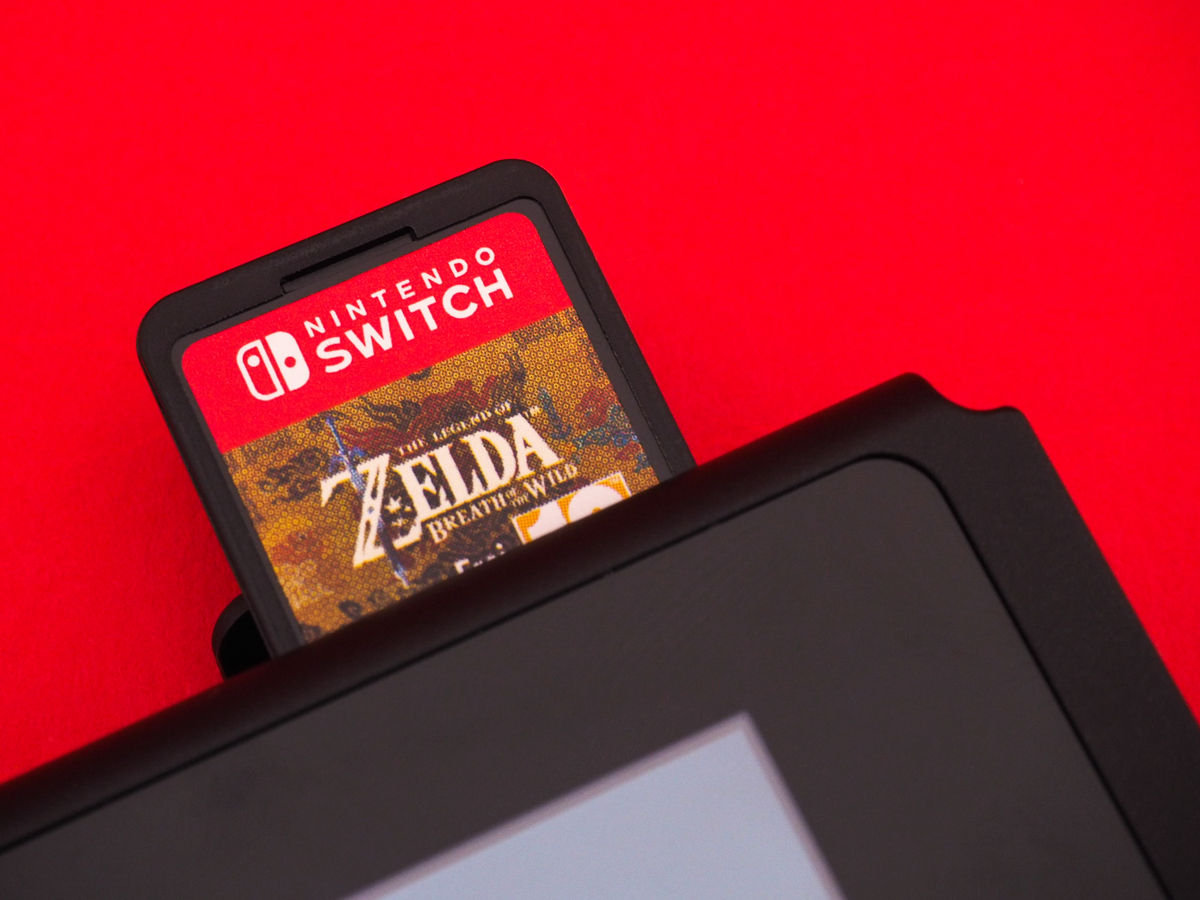
Sega’s Dreamcast proved that making a great console doesn’t guarantee people will make lots of great games for it, but the fact remains that the Switch’s hardware really is brilliant. More than a machine that nails Nintendo’s ‘play anywhere’ concept, it’s exceptionally well-made and the kind of console that you want to spend time with.
I just can’t see this thing gathering dust under my TV. Not when I can sneak in a fresh trophy in Mario Kart 8 Deluxe on the train into work, or take a few more steps towards slaying Calamity Ganon in Breath of the Wild.
A large part of this pick-up-and-play appeal is thanks to the Switch’s classy build. Rather than sticking with the the cheap, shiny plastic that Nintendo has been running with for the Wii and Wii U, this console is made from glass, metal and matte plastic. It’s a premium machine, which is just as well given it’s more expensive to buy than any other portable and most home consoles.
Design-wise the Switch is laid out in the same manner as a PlayStation Vita or GameBoy Advance, with its Joy-Con controllers slapped on either side of a 6.2-inch touchscreen. Despite not being capable of full HD resolutions, this 720p display is an absolute delight. Big, bright and capable of some stunning contrast and colours, it makes Breath of the Wild look every bit as good in the palms of your hands as it does on a telly. Text can sometimes appear a little on the small side, but otherwise I can’t fault the thing.
Whereas playing a game on the Wii U’s GamePad had you itching to get back to your TV, this is comfortable to use while travelling or while your better half enjoys a bigger screen instead. At 295g the Switch doesn’t weigh down your hands, while its battery life of between three and six hours depending on what game you’re playing can handle a long-ish journey without running flat.
You don’t need to be holding the Switch to play it away from the TV either. Simply flick out the kickstand on its backside and hook up one of the console’s controllers, of which you’ve got a fair few to chose from.
Oh, and we almost forgot, cartridges are back with the Switch. Why? That portability factor. They’re about the size of an SD card and slot right into the top the console under a flap. Don’t blow on them if they’re struggling to load though. That still won’t fix anything.
Joy-Cons: Nintendo’s made a new Wiimote
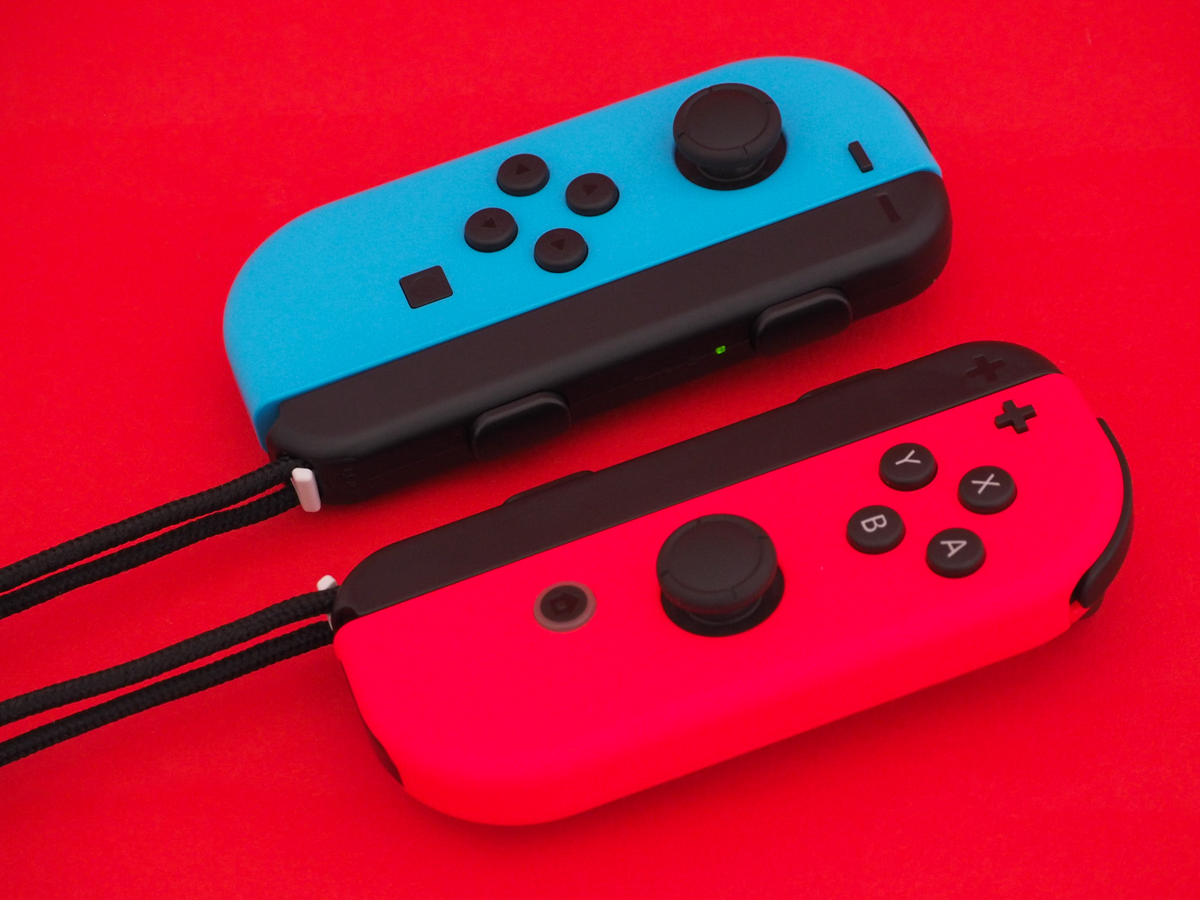
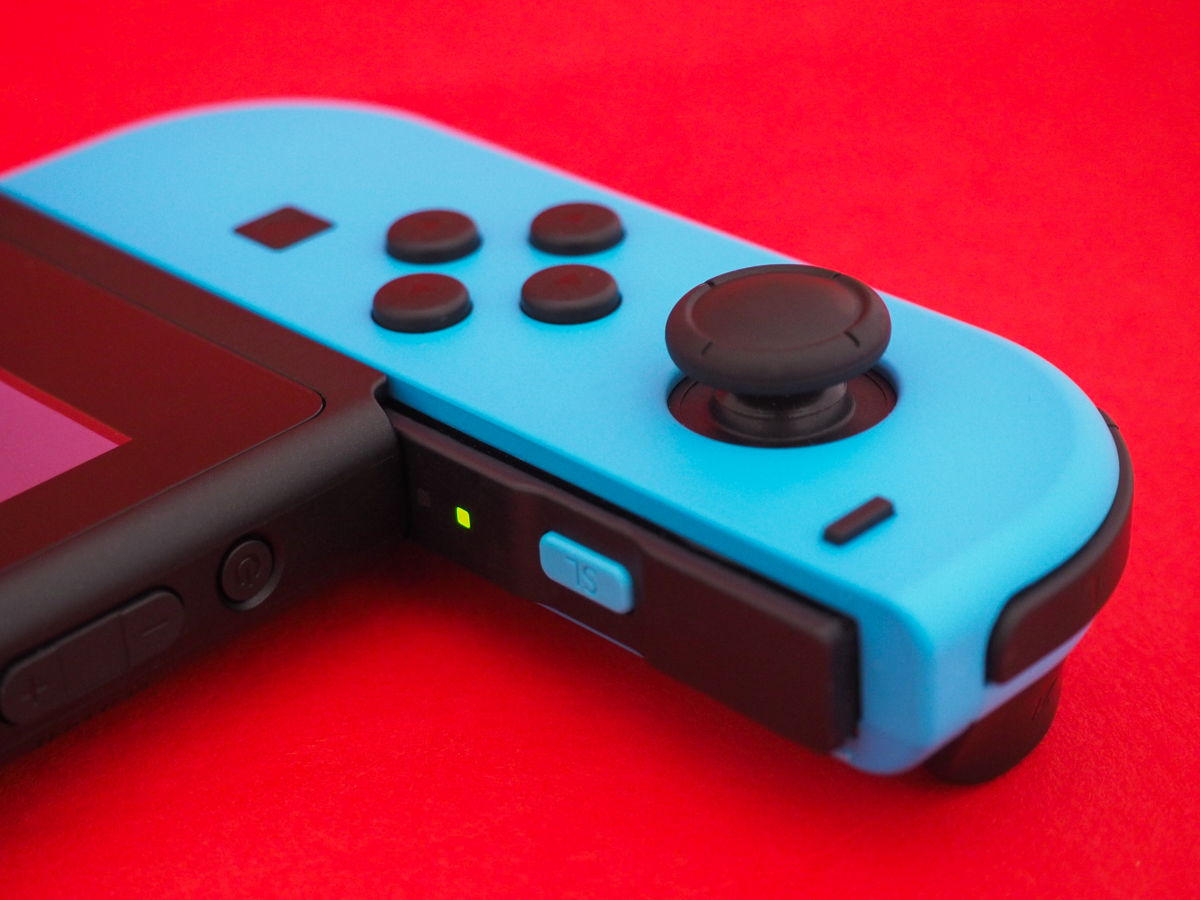
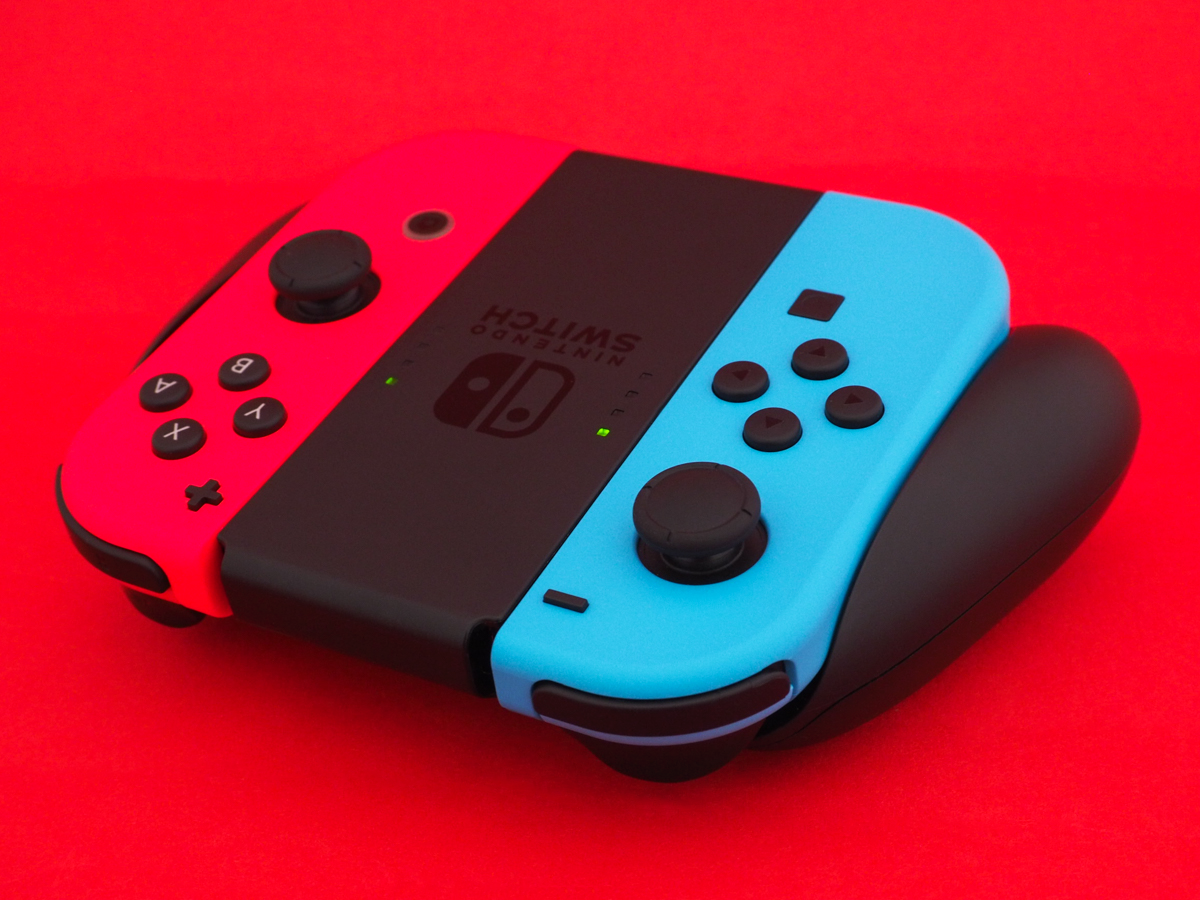
From the Wiimote to the N64’s Rumble Pack, Nintendo loves making weird controllers and inventive add-ons for them. The Switch does absolutely nothing to buck this trend, but crucially the Joy-Cons, their numerous Grips and the Switch Pro Controller are all up to scratch.
The Joy-Cons are the two controllers that you actually get in the box with your Switch and, like I said before, they usually sit on either side of the Switch’s screen. If you’re playing the console in handheld mode that’s where they’ll stay as well. Although you play through most games using both Joy-Cons in tandem, they share the same generous array of inputs: a control stick and six buttons sit on top of each pad, while two trigger buttons sit on top. If you detach them from the main Switch there are also two more buttons placed on their side.
I know what you’re thinking, that sounds like a lot of buttons. In practice it’s almost exactly the same number that you get from a PS4 or Xbox pad.
Because of the Switch’s portable nature, its buttons are smaller than what you get from a standard home console controller and they have less travel as well. Basically, they’re on par with what you get from a 3DS, so using them all in tandem still comes naturally. Even when you’re having to see off a horde of bloodthirsty Bokoblins in Breath of the Wild.
As well as being packed to the rafters with inputs, each Joy-Con has several motion sensors built in. Slide them out of the console and they basically work as a revamped Wiimote that’s super-lightweight and tucks right into the palm of your hands. They feel barely there when you’re playing minigame bonanza 1-2 Switch or cartoon fighter Arms, and that’s a really good thing if you enjoy the sight of your mates trying to pull off ludicrous dance moves or pretending to be a gorilla. The photos look that little bit more damning on Facebook.
The only time you’ll notice you’re holding a Joy-Con is when their HD Rumble kicks in. Realistically, this feature could have easily been called ‘slightly better rumble than normal’ as it allows you to differentiate between subtle vibrations. I doubt that one would have gotten past Nintendo’s marketing department though. Anyway, the important thing is that HD Rumble works and you can crack a safe in 1-2 Switch by telling the difference between the two. So far, that’s the Switch’s only game to use the feature though.
What’s so gurn-inducingly brilliant about the Joy-Cons is that they ensure the Switch is multiplayer-ready from the moment you unbox it. Since each one can be used as a basic, separate controller, you don’t have to buy a second set to invite a mate around for a spot of Mario Kart 8 Deluxe, 1-2 Switch or Super Bomberman R. They’ll have to invent a distant and now-deceased or apocalyptically important work presentation to avoid your company.
Finally, a quick note on the wireless syncing issues some reviewers have experienced with their left Joy-Con. We’ve not had that problem pop up. If it appears to be widespread in launch hardware after the Switch’s Day One patch then we’ll amend this review accordingly.
Joy-Con Grip & Pro Controller: Necessary upgrades
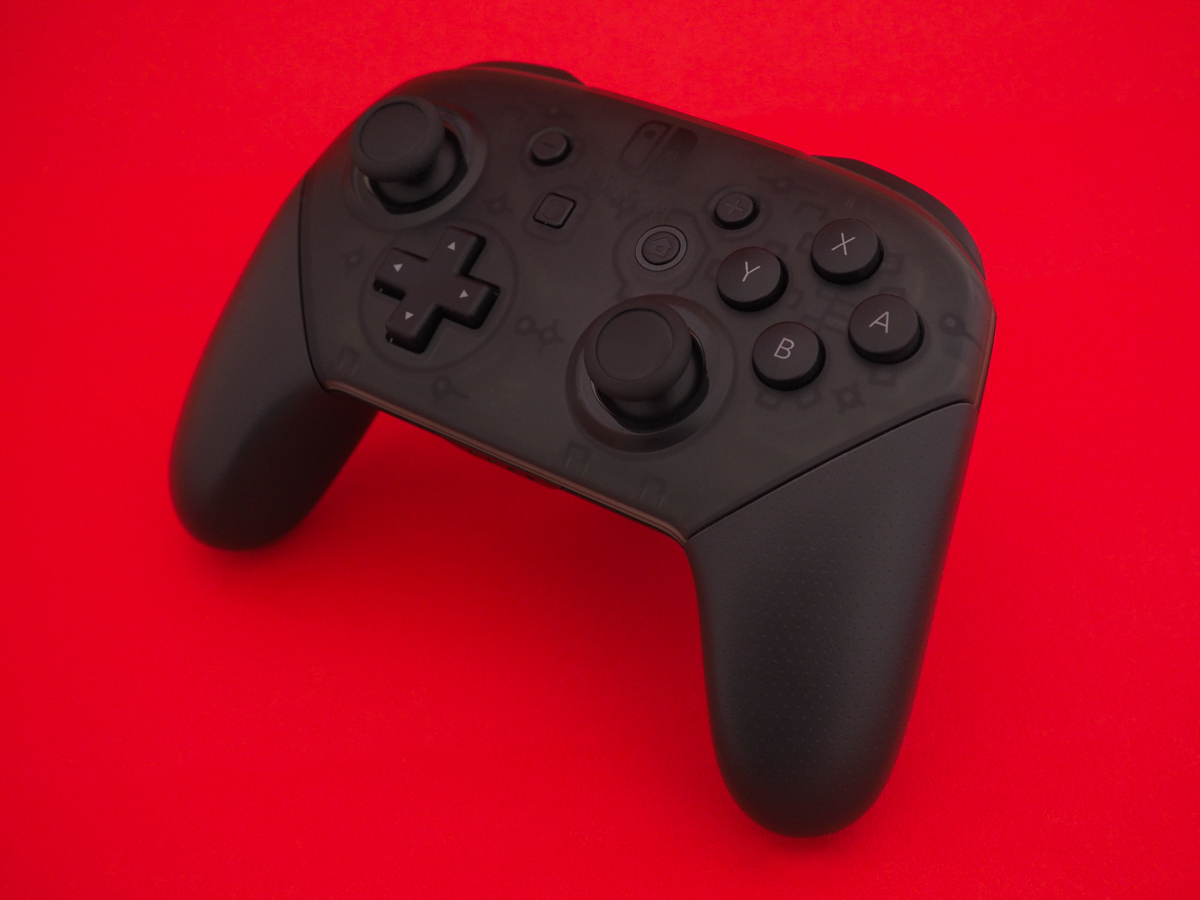
As much as the Switch’s portability is its ace in the hole, the thing that makes it totally distinct from a PS4 or Xbox One S, you’ll likely use it most when slouched in front of your TV. To that end Nintendo has also bundled another peripheral in with the Switch: the Joy-Con Grip.
The idea behind it is idiot-proof, you slot your two Joy-Cons out of the sides of the Switch and click them both into the Grip for a more traditional controller setup. Easy.
Since the Joy-Con Grip is a product of handheld compromise, its buttons are squashed together and its plastic handles are relatively shallow. Not so much that you’ll end up pressing the wrong button at a crucial moment or find the Grip slipping out of your fingers, but given the choice I much prefer to play at home with the £65 Pro Controller.
Essentially the Xbox One S’s pad remade for Switch, right down to those extra grippy handles, it gives you bigger buttons with greater travel and simply a lot more to hold on to. It’s also rechargeable, with a claimed battery life of 40 hours, and that’s not the case with the Joy-Con Grip. At least, not the one that comes packed in with the Switch.
In one of the most flagrant cash grabs I’ve seen for ages, Nintendo is also selling a Joy-Con Charging Grip separately for £28. It’s no different to the standard Joy-Con Grip, expect it’ll top up their battery life to the standard 20 hours over USB-C.
So thanks to a combination of ergonomics and profiteering, the Joy-Con Grip you get with the Switch is actually the third best way to play the console at home. Not ideal, is it? Even if you can happily get by playing that way.
Battery life and storage: One’s good. The other? Not so much
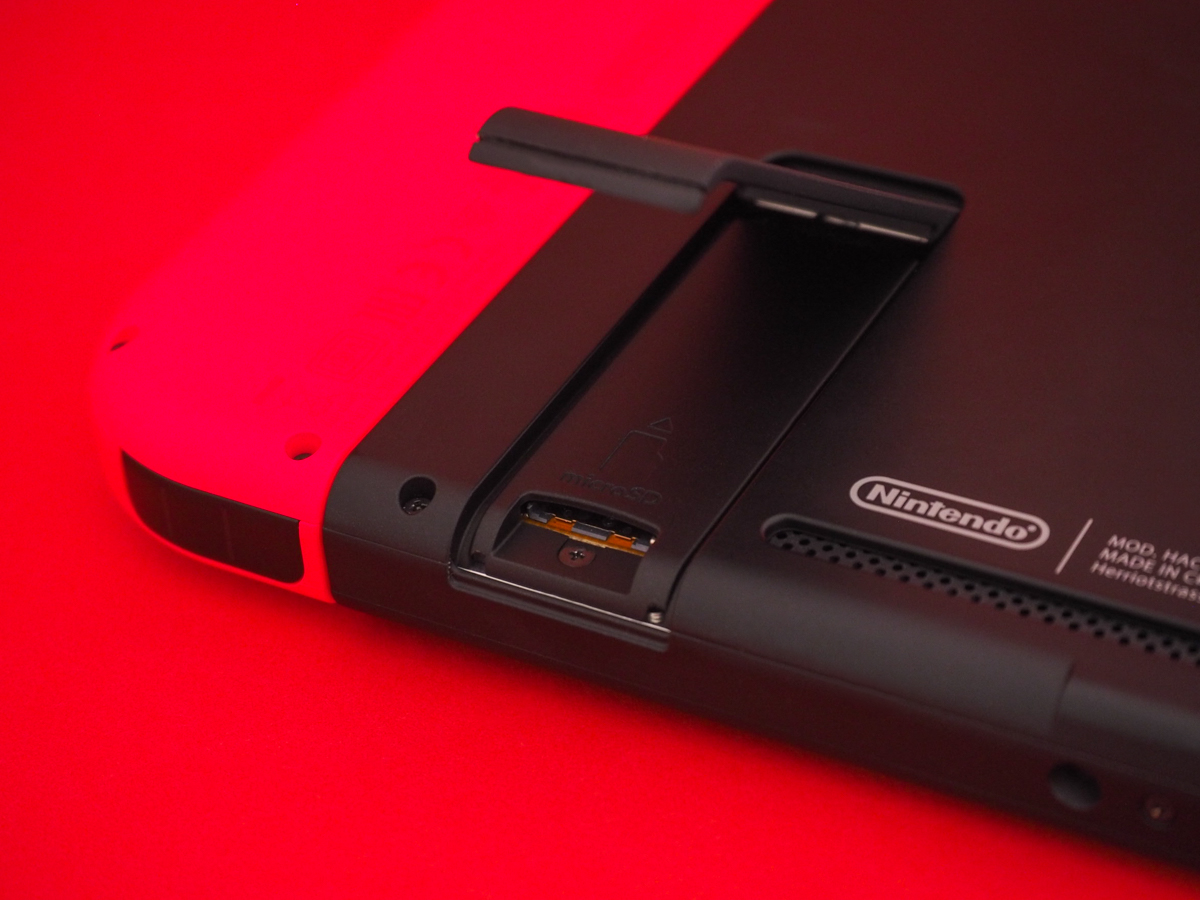
As I mentioned earlier, the Switch is said by Nintendo to have a battery life of up to six hours. That’s only when tasked with playing a thoroughly unchallenging game on low brightness settings, though. For Breath of the Wild our console mustered a less impressive but still thoroughly respectable performance of just over three hours.
That’s still enough stamina to last almost any daily commute and a very similar performance to what you get from Nintendo’s 3DS XL and Sony’s PlayStation Vita. In other words, it’d be churlish to complain too much. Especially as you can keep the thing charged up over a long-distance using a portable battery pack: just plug the thing into its USB-C port and it’ll start sipping up that spare juice. Otherwise, you recharge the Switch using either its dock or a mains USB-C adapter.
The same positivity can’t be applied to Nintendo’s approach to internal storage. Straight out of the box, you’ll only be able to use 25.9GB of its 32GB memory. Choose to download Breath of the Wild instead of buying a boxed edition and it’ll take up a further 13.4GB. Basically, you’re going to have to buy a microSD card for the Switch if you want to use Nintendo’s eShop and that is quite frankly ridiculous.
At least extra storage options aren’t too expensive. You can currently pick up a 128GB SanDisk microSD card for less than £40, and that should be enough to see you through the Switch’s lifespan. For what feels like a premium console it’s a shame that Nintendo had to cheap out in this way though.
Dock: It just works
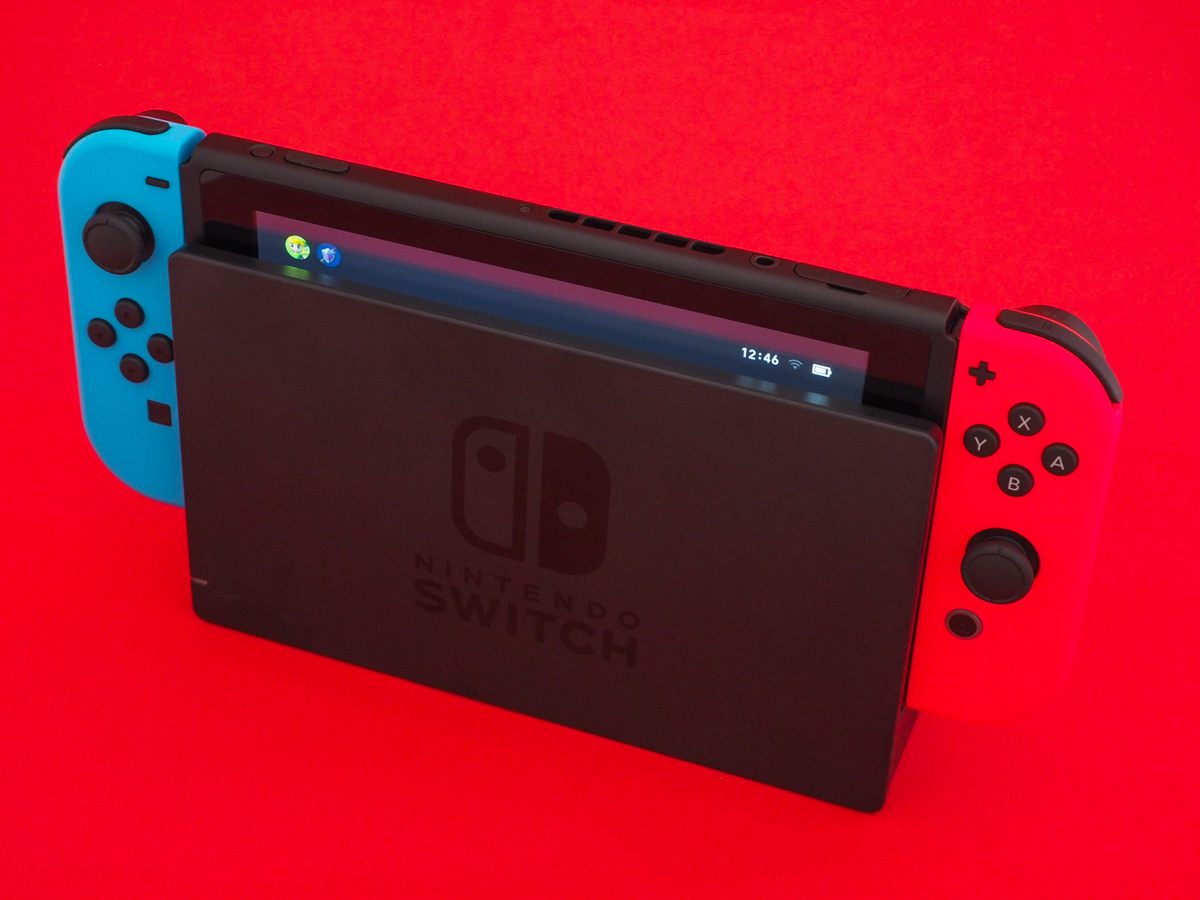
If you felt your finger hover over a ‘pre-order’ button when the Switch was properly unveiled this January, then it’s not hard to guess why. A console that works as well at home as it does as a portable? That is a genius idea. Better still, Nintendo has actually delivered on it.
Even though the Dock is the least sexy part of the Switch, it’s where most of its magic comes from. Pop the Switch tablet into it while turned on and your TV screen will pop into life in a matter of seconds. The same happens when you try things the other way around. The whole process couldn’t be easier or more fuss free, and you’ll probably end up trying it a couple of times in a row for fun when you first get your hands on the console. It’s just a delightful piece of techy wizardry.
Beyond changing how titles are rendered from 720p in handheld mode to (mostly) full HD while connected to your TV, there’s not all that much else the Switch’s Dock does. Stick the Switch console in it and it takes up an astoundingly small amount of real estate at just 23.9cm in width and 12.4cm in height. Compared to the gargantuan PS4 Pro, which is so big it sits on the floor next to my telly, you’ll have no problem finding space for the Switch and its Dock.
As for ports? It packs in a HDMI, USB-C power and three USB connections ports as well. Since the console doesn’t support USB storage at launch – you’re meant to use a microSD card instead, remember? – those latter ports are exclusively for recharging your Pro Controller or Joy-Con Charging Grip at the moment.
Ultimately, the Dock is a very simple bit of kit and that is its greatest strength. Slotting in your Switch and playing on your TV straight away is totally fuss-free. Just as well really: you’re going to be doing it a lot with this console.
Interface: Easy to use but no Netflix
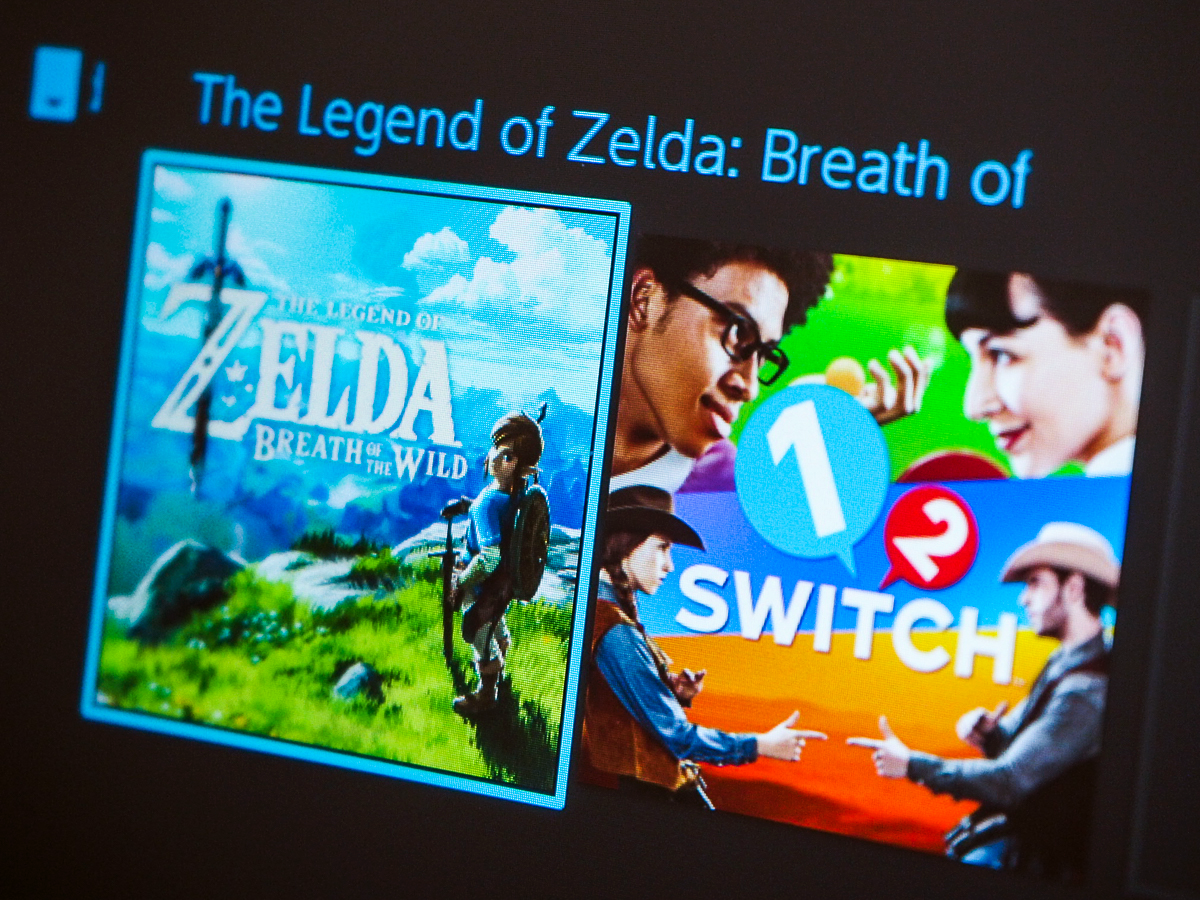
If you were in any doubt that the Switch is a games machine and a games machine only, then that illusion won’t last long once you’ve turned it on. Taking an obvious cue from Sony’s system software for PlayStation 4, the Switch’s own operating system gives you a series of big tiles to choose a game from, while some smaller dots are placed underneath them so you can access stuff like Nintendo’s eShop and the console’s settings.
It’s an uncluttered setup that’s quick to work your way around. Or in other words, it’s the complete mirror image of what Wii U users had to put up with. If the price of this change is not having a gaggle of Mii’s wandering around my TV screen and uttering inane superlatives about the latest Mario game, then I am very much OK with that. The Switch makes it easy to play the games you own.
Job done? I’d say so, even though you can’t use the Switch to stream Netflix, Amazon Prime Video or BBC iPlayer as you could on its predecessor. While those kind of apps were important to have on a console five years ago, any recent smart or 4K TV comes with them built in. And if you’re still struggling find them? Then a new Chromecast will only set you back £30. Nintendo has also said it will assess this situation as the console picks up users.
Online: The great Switch unknown
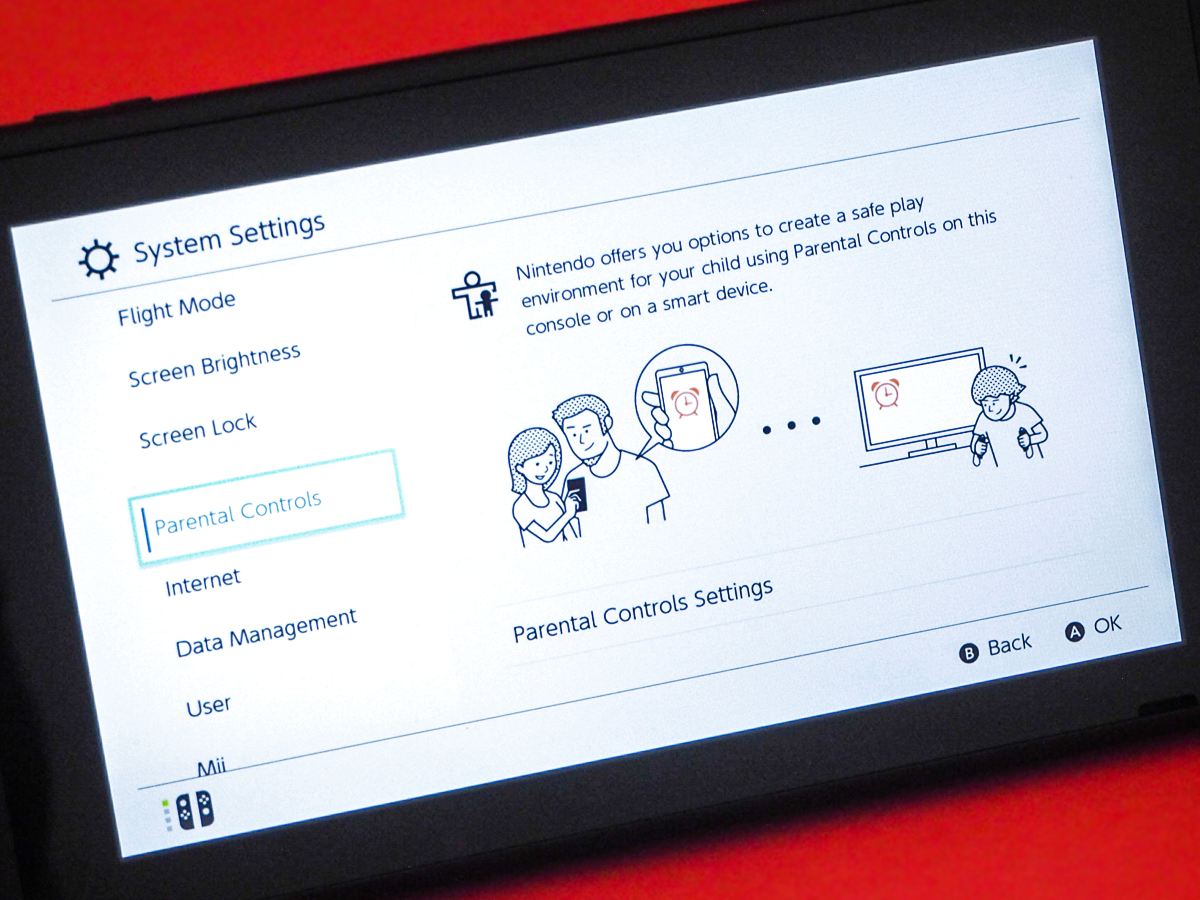
Online multiplayer (on Mario Kart 8 Deluxe, Splatoon 2 and everything else with an online component) will be free until the Switch’s subscription service arrives in September. When that happens you’ll have to stump up what’s estimated to be around £20 per year according to Nintendo, and you’ll get access to a ‘refreshed’ retro title from Nintendo’s previous consoles every month as part of the deal. Also, an app is meant to take on a lot of the Switch’s online functionality, such as voice chat. It’s a bit of a mess right now in all honesty.
However this situation resolves itself, Nintendo has struggled with online in the past and – with titles such as Mario Kart 8 Deluxe and Splatoon 2 demanding decent multiplayer – it no longer has that same luxury. Personally, I’d rather it took the time to get things right with multiplayer and its Virtual Console than risk another ill-thought-out balls-up. Why the year or so before now wasn’t long enough to sort it remains a mystery.
Competition: PlayStation 4 and Xbox One S
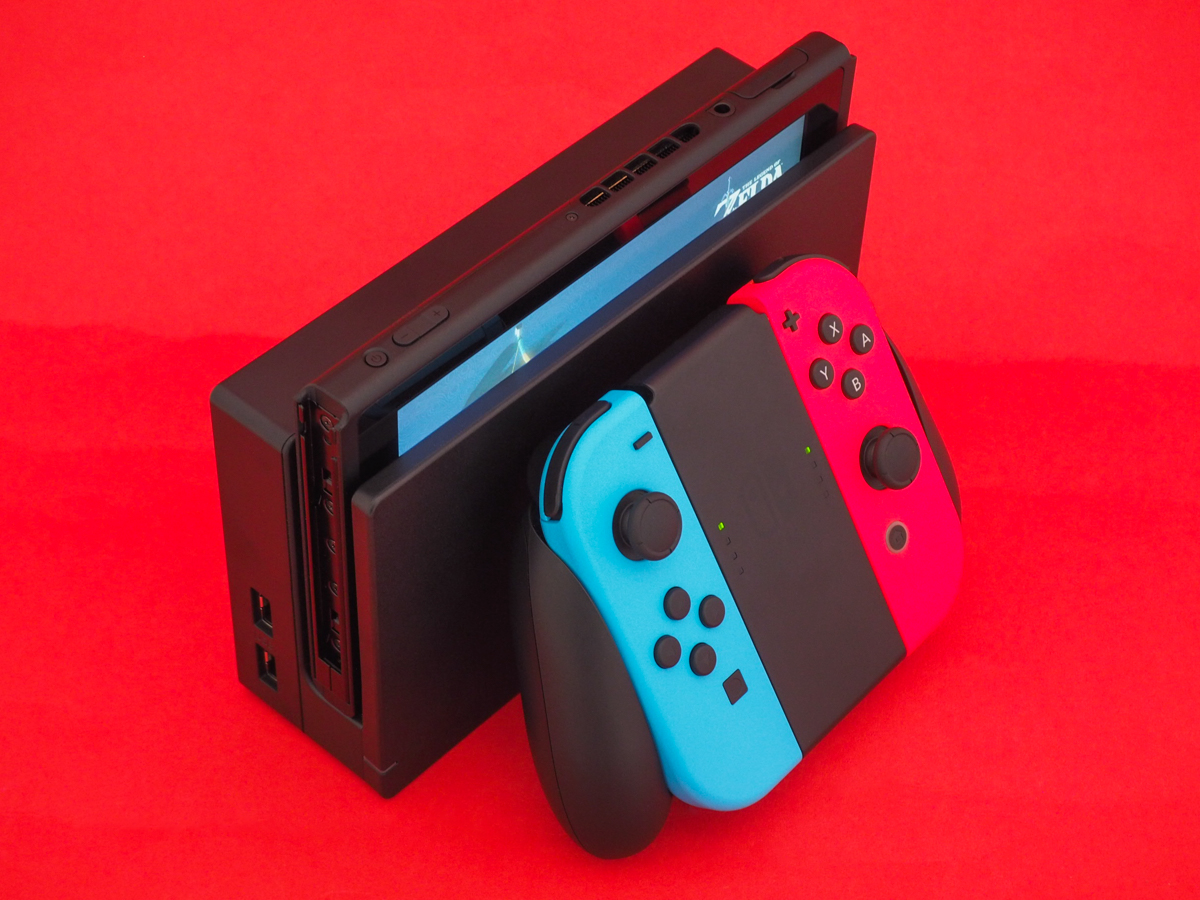
Since it’s a 2-in-1 console, comparing the Switch to its competition is tricky. As a homebound machine, it’s going up against the PlayStation 4 Slim and Xbox One S. As a portable, it’s comparable to Nintendo’s own 3DS and an iPad.
While there’s no disputing that the Switch has significantly less graphical grunt than even your base-level PlayStation 4 Slim and a shorter battery life than an iPad, the fact is that it is good enough on both of those fronts. Games still look fabulous on this console and it’s got the stamina to see almost anyone through their daily commute.
Breath of the Wild in particular is one of the most gorgeous games I have ever played and is every bit as jaw-dropping as Uncharted 4 and Forza Horizon 3. Place the upcoming FIFA for Switch side-by-side with its PS4 Pro incarnation and that’s where the downgrade will show. Third-party titles won’t have quite the same wow factor as they do on other consoles, and there will doubtless be more of them to play elsewhere.
Want to be sure you can get your hands on Red Dead Redemption 2, Prey and Mass Effect: Andromeda? Then don’t get the Switch as your only console.
As ever, the upside of owning a Nintendo console is that you get the best exclusive titles bar none. From Ocarina of Time to Super Mario Galaxy 2 and Super Metroid, Nintendo has a game-making pedigree that no other developer can compete with. The Switch will deliver more awesome titles in that lineage, and given the choice I would play them over Bloodborne, Sea of Thieves and even The Last of Us Part II.
Sony’s PS4 exclusives have been great so far – light years ahead of their Xbox One counterparts – but I still don’t think they’re up to Nintendo standards. It’s this heritage and the unique ability to be played anywhere that the Switch is banking on to make a success of itself. Especially considering the Switch is about £50 more expensive than a base-level PS4 Slim or Xbox One S.
(Updated 19/07/18) Nintendo Switch Verdict
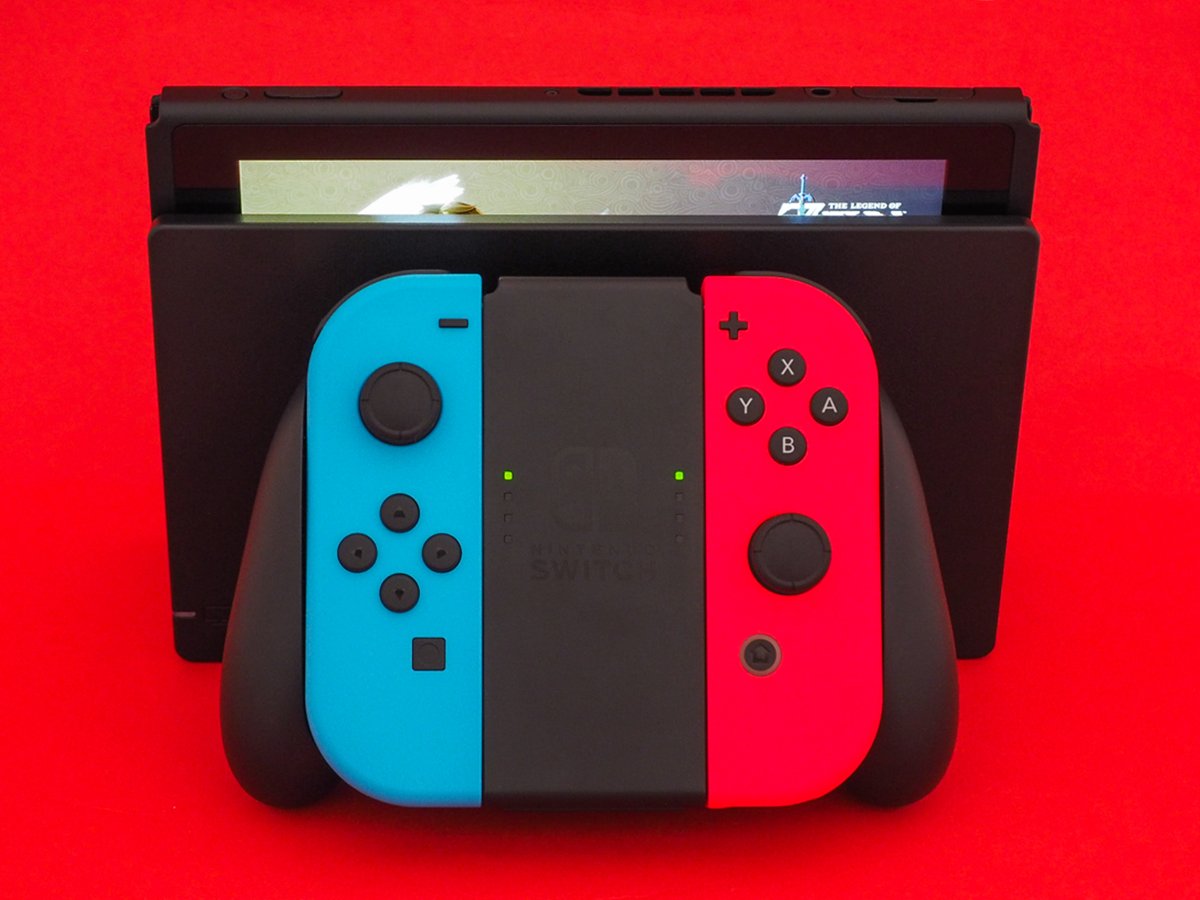
The Nintendo Switch was a gamble of monumental proportions. Especially following the Wii U disaster.
But after addressing concerns about third-party support and serving up a stellar line-up of exclusives, the Switch now confidently ranks up there as one of Nintendo’s very best consoles.
Its ‘play anywhere’ concept is inventive in a way you’ll actually appreciate, Zelda: Breath of the Wild is absolutely essential and most importantly pretty much everyone I’ve handed one to has had a blast with the thing.
By going all-in with a 2-in-1 machine, Nintendo has captured people’s imaginations in a way it hasn’t done since the Wii.
Stuff Says…
Nintendo’s 2-in-1 console is the real deal, with a huge list of fantastic games
Pros
Brilliant as both a home console and a portable
Joy-Cons are genius
Solid line-up of games
Cons
Hidden costs of ownership add up
Online service still up in the air

